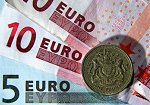
In an interesting development late this week – first reported by Ryan Grim of HuffPo, which I paraphrase below, and in an FT article earlier this week.
‘The Fed is already printing trillions of U.S. dollars and pumping them into the global economy in an effort to add Market liquidity and reflate the Global economy in an effort to stave off a global financial collapse. Now, it plans to start injecting foreign currency swaps into the equation, too, according to minutes recently released from its March meeting.
How the heck can the U.S. Fed do that..?? Glad you asked.
 The Federal Reserve engages in so-called “swaps” with foreign countries, which I first reported here. It uses these swaps to pump hundreds of billions of dollars into foreign central banks while taking foreign currency in exchange. The foreign central banks pass their new U.S. dollars to their foreign financial institutions, while the Fed has kept the foreign currency on its balance sheet and not injected it into the money supply.
The Federal Reserve engages in so-called “swaps” with foreign countries, which I first reported here. It uses these swaps to pump hundreds of billions of dollars into foreign central banks while taking foreign currency in exchange. The foreign central banks pass their new U.S. dollars to their foreign financial institutions, while the Fed has kept the foreign currency on its balance sheet and not injected it into the money supply.
Now, however, the Fed will be able to take the foreign currency it acquires in these swaps, and rather than hold it on its balance sheet, pass it on to U.S. banks, according to minutes from the Federal Open Market Committee’s March meeting. These U.S. banks can then use that foreign currency to cover their foreign debts. It seems to me like a backdoor way to help bailout the large money-centered banks.
The Fed governors said, according to the meeting notes, that the measure was only precautionary: “There was no evidence that these institutions were encountering difficulty in meeting foreign currency obligations at this time, but these facilities would be available should pressures develop in the future.” The expanded effort is part of a Fed project that has been injecting hundreds of billions of dollars into foreign central banks over the last several months. The committee notes say that the new program will “augment the existing network of central bank liquidity swap lines.”
The Fed also announced in its minutes that it was approving “additional temporary reciprocal currency arrangements (swap lines) with the Bank of England, the European Central Bank (ECB), the Bank of Japan, and the Swiss National Bank.” Extending additional swaps to these central banks raises the question of whether those banks are facing difficulties repaying previous swaps. The European and Japanese economies have been collapsing at a faster rate than the United States’ has.
“It is basically either an extension or increase of the existing lines, and raises suspicion that massive losses have been incurred in the previous round of supposedly ‘temporary’ swaps, as the return to dollar-supply-normalcy that these geniuses pretended to expect would have happened by now, did not,” ventures economist James Galbraith.
Rep. Alan Grayson (D-Fla.), after reading the minutes, describes the Fed plan as “a massive transfer of wealth from the American people to who knows where,” calling it a “round-about bailout.”
Beyond that, he notes, it’s hard to know what to make of the Fed action because of the obscurity of the institution. “The Fed is out of control. If the president tried to do this, Republicans would be calling for his impeachment. But because it’s done by the man behind the curtain they call the Chairman of the Federal Reserve, it’s supposedly okay,” he says, arguing that the founding fathers never intended one man to have so much unchecked power. The obscurity has led economists to wonder about the Fed’s true motives.
The expansion of Fed power comes amid increasing calls for transparency into the workings of the organization. If the Fed does send foreign currency to U.S. banks, it will be under no requirement to disclose which banks or how much.
On Wednesday, Financial Services Committee Chairman Barney Frank (D-Mass.) called for the GAO to have more authority to investigate the Fed. Grayson says Frank has told him on numerous occasions that Congress needs a better idea of what it is that the Fed is doing.
On Wednesday night, House Speaker Nancy Pelosi (D-Calif.) called on the Fed to post its financial transactions online during a conversation with the Daily Show’s John Stewart. She plans to address “Fed authority” when Congress returns.’
See Fed Monetary policy here: From the minutes: 